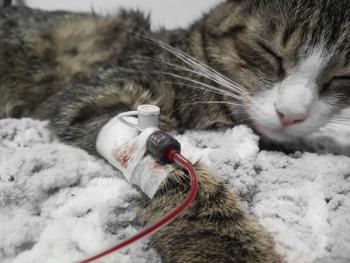
Signs a cat may have arthritis
Kristin Kirkby Shaw, DVM, PhD, MS, DACVS-SA, DACVSMR, discusses how veterinarians can guide clients in spotting subtle signs of feline arthritis at home.
Cats with arthritis often hide their pain, making client education on feline signs of discomfort an important step for an accurate diagnosis. In this video, Kristin Kirkby Shaw, DVM, PhD, MS, DACVS-SA, DACVSMR, founder of Canine Arthritis Resources and Education (CARE), discusses signs cat owners should watch out for that may indicate their feline companion is in pain.
Below is the interview transcript:
Kristin Kirkby Shaw, DVM, PhD, MS, DACVS-SA, DACVSMR: Cats with arthritis are going to do everything possible to hide their pain, especially when they come into the vet clinic. So...veterinarians really need to rely on the caregiver—the pet parent—to know what signs of pain look like at home. Those signs are typically going to be changes in the cat's behavior and changes in their mobility.
There are 6 things that have been specifically identified that correlate with arthritis pain in cats, and those 6 things are:
- changes in how the cat goes upstairs;
- changes in how they go downstairs;
- changes in how they jump up;
- changes in how they jump down;
- changes in how they run; and
- changes in how they play.
The key word here is change. It's not necessarily that the cat stops jumping up, stops jumping down, or stops playing, but they alter their behavior and their body mechanics to make it easier for them, like taking multiple little jumps or angling their body.
So, talking to pet parents and cat owners about how their cats are moving and how that might have changed over time, those are the big things to look for [and identify] signs of pain. Other things could include urinating or defecating outside the litter box. So, it might be painful to get into the litter box. They may be overgrooming or undergrooming themselves, or they just might hide more often because they hurt and don't want to be touched.
Newsletter
From exam room tips to practice management insights, get trusted veterinary news delivered straight to your inbox—subscribe to dvm360.




